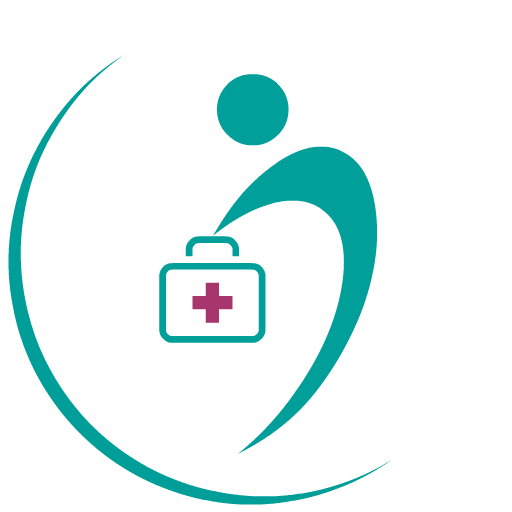Adrenoleukodystrophy (ALD) is a rare genetic disorder that affects the nervous system.
It is a part of a group of disorders called leukodystrophies, which impact the myelin sheath—the protective covering of nerve cells. ALD primarily affects boys and leads to the progressive degeneration of the brain, adrenal gland, and spinal cord. In this article, we will delve into the different aspects of Adrenoleukodystrophy, including its types, symptoms, diagnosis, causes, treatment options, and more.
What is Adrenoleukodystrophy?
Adrenoleukodystrophy is a genetic disorder caused by mutations in the ABCD1 gene, which is responsible for the production of a protein called ALDP. This protein plays a vital role in the breakdown and transportation of very long-chain fatty acids (VLCFAs). In individuals with ALD, the defective ALDP protein leads to the accumulation of VLCFAs, which eventually damages the myelin in the nervous system.
Types of Adrenoleukodystrophy
There are several types of Adrenoleukodystrophy, including:
Childhood Cerebral ALD (cALD)
Adolescent ALD
Adrenomyeloneuropathy (AMN)
Addison Disease Only
Variant Forms
Each type has distinct characteristics and affects different age groups. Childhood Cerebral ALD (cALD) is the most severe form and typically affects boys between the ages of 4 and 10 years.
Symptoms and Diagnosis
The symptoms of Adrenoleukodystrophy can vary depending on the type and progression of the disease. Common symptoms include:
Behavioral changes
Progressive loss of cognitive function
Deterioration in motor skills
Visual and hearing impairment
Seizures
Adrenal insufficiency
Diagnosing Adrenoleukodystrophy involves a combination of clinical evaluation, genetic testing, and imaging studies such as magnetic resonance imaging (MRI) of the brain. Early diagnosis is crucial for implementing appropriate treatment strategies.
Causes and Risk Factors
Adrenoleukodystrophy is an inherited disorder that follows an X-linked pattern of inheritance. It predominantly affects males, although females can be carriers of the disease. Mutations in the ABCD1 gene are responsible for the development of Adrenoleukodystrophy. Risk factors for ALD include having a family history of the disorder or being born to carrier parents.
Treatment and Management
Currently, there is no cure for Adrenoleukodystrophy. However, various treatment options and management strategies are available to alleviate symptoms, slow disease progression, and improve the quality of life for individuals with ALD.
1. Medications and Supportive Care
Medications and supportive care play a crucial role in managing the symptoms associated with Adrenoleukodystrophy. Treatment may involve:
Hormone replacement therapy: Adrenal insufficiency, a common symptom of ALD, can be managed through hormone replacement therapy to restore normal hormone levels.
Symptomatic treatment: Medications may be prescribed to address specific symptoms such as seizures, muscle stiffness, and spasticity.
Physical and occupational therapy: Rehabilitation programs, including physical and occupational therapy, can help individuals maintain mobility, improve muscle strength, and enhance overall functioning.
2. Stem Cell Transplantation
Stem cell transplantation, also known as hematopoietic stem cell transplantation (HSCT), is a treatment option for certain individuals with ALD, particularly those with early-stage disease. In this procedure, healthy stem cells are transplanted into the patient to replace the faulty cells. HSCT aims to halt the progression of the disease and potentially improve neurologic outcomes. However, it is essential to consider the risks and benefits associated with this treatment approach, as it carries potential complications and may not be suitable for everyone.
3. Gene Therapy
Gene therapy holds promise as a potential treatment for Adrenoleukodystrophy. This innovative approach involves introducing a functional copy of the ABCD1 gene into the patient's cells to restore the production of the ALDP protein. Gene therapy research for ALD is still in its early stages, but early results have shown promising outcomes in certain individuals. Ongoing research aims to refine and optimize gene therapy techniques for broader application in the future.
Living with Adrenoleukodystrophy
Living with Adrenoleukodystrophy presents unique challenges for both individuals with the disease and their families. It is crucial to establish a comprehensive support network and access appropriate resources. Here are some important aspects to consider:
Regular medical check-ups: Routine medical evaluations can monitor disease progression and identify any potential complications.
Emotional and psychological support: Adrenoleukodystrophy can have a profound impact on mental well-being. Seeking counseling or joining support groups can provide emotional support and guidance.
Educational support: Individuals with ALD may require special educational accommodations. Collaborating with educators and school administrators can help ensure appropriate support and resources are in place.
Research and Future Directions
Advancements in medical research have been instrumental in expanding our understanding of Adrenoleukodystrophy (ALD). ALD is a rare genetic disorder that affects the nervous system and adrenal glands, primarily in males. It is characterized by the buildup of very long-chain fatty acids (VLCFAs) in various tissues, leading to the destruction of the myelin sheath that protects nerve cells.
In recent years, researchers have made significant strides in exploring novel therapeutic strategies for ALD. One promising avenue is gene editing techniques, such as CRISPR-Cas9, which allows for precise modification of the defective gene responsible for VLCFA metabolism. By correcting the genetic mutation underlying ALD, scientists hope to halt or slow down the disease progression. While gene editing is still in its early stages, preclinical studies have shown promising results, and efforts are underway to translate these findings into clinical trials.
Another area of focus is targeted molecular therapies, which aim to modulate the production or metabolism of VLCFAs. Researchers are investigating small molecule drugs and gene therapies that can normalize VLCFA levels, thus preventing the damage to myelin. These targeted approaches hold great promise in providing more effective treatment options for individuals with ALD.
To evaluate the safety and efficacy of these emerging therapies, clinical trials are currently underway. These trials involve carefully designed protocols to assess the impact of the experimental interventions on ALD patients. By participating in these studies, individuals with ALD and their families play a crucial role in advancing medical knowledge and improving outcomes for future patients.
Supporting ongoing research efforts is of utmost importance in the fight against ALD. Research institutions, advocacy groups, and funding organizations are working together to provide resources and financial support for scientific investigations. Additionally, raising awareness about ALD and its impact on individuals and families can help mobilize public support and encourage further research initiatives.
In conclusion, the field of ALD research is witnessing exciting developments in understanding the disease and exploring innovative treatment approaches. Gene editing techniques, targeted molecular therapies, and clinical trials offer hope for improved outcomes for individuals with ALD. By fostering collaboration and supporting ongoing research efforts, we can continue to advance our knowledge and bring us closer to finding effective treatments for this devastating disorder.
Conclusion
In conclusion, Adrenoleukodystrophy is a rare genetic disorder that affects the nervous system. While there is currently no cure for the condition, various treatments and management strategies exist to alleviate symptoms and improve the quality of life for individuals with Adrenoleukodystrophy. Ongoing research and advancements in therapies offer hope for the future. If you or a loved one are affected by Adrenoleukodystrophy, it is important to consult with healthcare professionals and explore available support networks to receive appropriate care and guidance.
FAQs (Frequently Asked Questions)
FAQ 1: Can Adrenoleukodystrophy be cured?
At present, there is no known cure for Adrenoleukodystrophy. However, various treatments and management strategies are available to alleviate symptoms and improve the quality of life for individuals with Adrenoleukodystrophy.
FAQ 2: Is Adrenoleukodystrophy hereditary?
Yes, Adrenoleukodystrophy is a genetic disorder that follows an X-linked pattern of inheritance. This means that the mutated gene responsible for ALD is located on the X chromosome. Males have one X chromosome and one Y chromosome, while females have two X chromosomes. Males who inherit the mutated gene are more likely to develop the disease, while females who carry one copy of the mutated gene can be carriers and may pass the gene to their children.
FAQ 3: What are the early signs of Adrenoleukodystrophy?
The early signs of Adrenoleukodystrophy can vary, but common symptoms include behavioral changes, such as aggression or hyperactivity, poor school performance, difficulties with coordination and walking, visual and hearing impairment, and adrenal insufficiency. It is important to note that the symptoms and their severity can differ depending on the type of Adrenoleukodystrophy.
FAQ 4: How is Adrenoleukodystrophy diagnosed?
Diagnosing Adrenoleukodystrophy involves a combination of clinical evaluation, genetic testing, and imaging studies. A thorough medical history and physical examination are conducted to assess symptoms and identify any neurological abnormalities. Genetic testing analyzes the ABCD1 gene for mutations associated with Adrenoleukodystrophy. Imaging studies, such as magnetic resonance imaging (MRI), can reveal characteristic changes in the brain's white matter.
FAQ 5: What is the life expectancy of individuals with Adrenoleukodystrophy?
The life expectancy of individuals with Adrenoleukodystrophy can vary depending on the type and progression of the disease. Childhood Cerebral ALD (cALD), the most severe form, typically leads to a rapid decline in neurological function. Without treatment, affected individuals may have a significantly reduced life expectancy. However, early diagnosis, appropriate management, and treatment interventions such as stem cell transplantation can improve outcomes and potentially extend life expectancy.
Blogs
Stay connected to health experts and read what they have to say via DocSmart.
Please sign up to create your own blog





